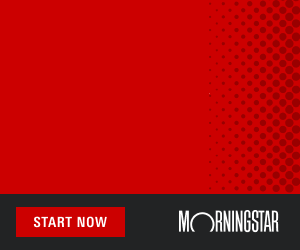Federal Reserve Chair Jerome Powell in March appeared before the Senate Banking Committee and vowed the US central bank would quell inflation running at four-decade highs. “We are going to use our tools,” he said. Then came a pointed question. Would the Fed be prepared to harm the economy to tame inflation?
To show his intent to smother inflation, Powell answered “yes” by invoking the last Fed chief to induce a recession to rein in price rises. The Jimmy Carter-appointed Paul Volcker, who was Fed chair from 1979 to 1987, raised the key rate so much he triggered two recessions. “I knew Paul Volcker,” Powell said. “I think he was one of the great public servants of the era.”
Volcker was probably the most hated. As the economy slumped, the Fed was subject to protests that still rate the greatest in its history. In-debt farmers on tractors besieged Fed headquarters while car dealers sent coffins full of unsold car keys. Volcker was assigned bodyguards, especially as a man angry at high rates and armed with a sawed-off shotgun burst into Fed HQ.
While Volcker was scorned by industry, the public and politicians, historians have been kind. “Volcker was Jimmy Carter’s gift to Reagan,” one Reagan biographer wrote. Volcker “squeezed the inflationary expectations out of the economy and put it on the path to solid growth”.
Powell says he can achieve the same feat without the Volcker recession(s). He’d better. While Volcker bore little responsibility for how inflation was running at 13% when he became Fed chair, Powell is to blame for much of today’s inflation (running at 8.5% in the 12 months to March) for two reasons.
The first is Powell loosened the Fed’s inflation guidelines by scrapping a 2% inflation ceiling in favour of an average target of 2%. The move signalled the Fed would refrain from taking pre-emptive steps against inflation and makes inflationary expectations prone to leaps.
Powell’s other error – one he admits to – was to misdiagnose inflation as fleeting. Even though inflation has topped 5% since mid last year by when unemployment had fallen below 6%, the Fed left untouched a record low US cash rate and persisted with its asset purchases until March this year.
Powell’s fightback against inflation kicked off in March when the Fed raised the cash rate by 25 basis points to a range of 0.25% to 0.5%. On the day the Fed raised the cash rate, Fed policy-setting board member ‘projections’ showed they expect to authorise another 11 rate increases of 25 basis points by the end of 2023 that would lift the key rate to 2.8%. The Fed thus thinks it can douse inflation with negative real rates while the economy will “flourish” in Powell’s words and unemployment stays at generational lows. The jobless rate stood at 3.8% in February.
Such thinking contradicts how the Fed’s economic models assume a trade-off between inflation and employment. Michael Feroli, chief US economist at J.P.Morgan, ridiculed the Fed’s forecasts as “magical, immaculate disinflation”.
The models on which the Fed bases policy decisions are Keynesian-based ones where policymakers seek to manipulate demand. Powell’s biggest problem is the US economy is not just overheating due to excessive demand (due to fiscal and monetary stimulus). The economy is suffering from ‘supply shocks’ beyond the reach of monetary policy that fan inflation while denting growth.
Count these shudders. Russia’s attack on Ukraine has boosted energy, food and metal prices and reduced consumer spending on other items. The West’s sanctions against Russia will hasten the reversal of the globalisation that exploited cheap foreign labour to reduce the cost of goods. China’s lockdown is just the latest to constrain the output of ‘the world’s factory’ and elsewhere. The pandemic-inspired ‘reshoring’ of production since 2020 has caused shortages. Lockdown populations, flush with fiscal stimulus, bought so many goods that ports, ships, trains and trucks couldn’t cope. Populations detained at home boosted demand for technology so much a shortage of microchips is hobbling the production of many goods. A shift to renewable energy is causing ‘greenflation’, the term for when the supply of fossil fuels falls but demand doesn’t. Pandemic-inspired resignations and the decline of working-age populations tied to falling birth rates are pushing up wages.
Powell’s best hope is the supply shocks ease and inflation recedes without the Fed needing to raise rates too much. This is the “soft landing” of the Fed projections. Next best, Powell might permit moderate inflation and hope to avoid a cost-of-living blowout that would result in stagflation. An option if inflation persists? Powell might have to crush the economy. Ultimately, a credible Fed chair must mimic Volcker.
To be sure, amid all the supply shocks, some excess demand the Fed could stifle is boosting US inflation. The US economy could enter a downturn irrespective of what the Fed does, if say a eurozone or emerging country defaulted. In an era of record debt and bloated asset markets, Powell need not raise the US cash rate to the level Volcker did to slow economic growth.
But Powell surely needs to do more than the Fed projections suggest. In the balance between aiming for price stability and full employment, the Fed seeking to hold its authority and independence will eventually need to prioritise fighting inflation to keep the trust that Volcker earned against much hostility.
For the full version of this article and to view sources, go HERE.




